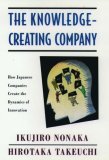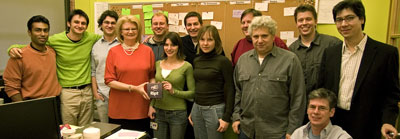When we set out to build consumer software, I pulled together sentiments from our CEO, lessons learned, and principles behind the Agile Manifesto into our own set of principles.
Since I’ve already received permission from my employer to publish it in a paper, Agile Practices and Innovation, I thought I’d include it here.
Oxygen Software Product Development Manifesto
Building consumer software is a joyous and daunting challenge. We, software developers, owe Oxygen and Oxygen’s customers every chance at success. We believe success springs from the following principles:
It’s all for the end user
The most important relationship is between us, the people building these tools and the women and men who are our customers. We must continually refine our products based on ever increasing knowledge of our customers.
Our highest priority is to satisfy the customer through early and continuous delivery of valuable software. — http://agilemanifesto.org/principles.html
People own their identity and information
We respect our customers. We respect their privacy. We believe people own their virtual selves.
To that end, we will never misuse data, we will always provide a way to keep personal information private, we will always give our customers a way to export their assets and remove their identity from our systems.
Each tool we build helps people do a specific thing better than anything else available
Build the best solution for a specific need felt by a broad range of women.
Build simple tools that are useful, elegant and fun and go from there
First build a specific solution and then abet our customers using that tool in ways we never imagined.
This is both a cause and a business
We must remember that this is a business proposition. As our products evolve, we need to understand the revenue models and targets. We need to help define and measure appropriate metrics. We need to do everything we can without sacrificing the other values in this manifesto to achieve the business aim of the company.
Gerry Laybourne is the product owner
If our most important relationship is with our customers, our most important collaboration is with our product owner. Gerry sets our priorities. She must embrace what we are doing. Our relationship must remain direct. The best way to convey information is face-to-face.
These tools spring first and foremost from Gerry’s imagination. Direct connection between Gerry’s vision and our team’s creative efforts leads to success.
We are inventors
We must imagine solutions outside current limitations and ask ourselves, “what of this can be done now”. We must build something never seen before that when handed to the right consumer feels inevitable and obvious.
We must engage creativity, empathy with our customers, resolute professionalism and an inspired sense of play.
If we don’t love our inventions, no one else will.
We have authority, we are responsible, we are accountable
We are a self-organizing team in the best spirit of Agility.
If we, the people doing the work, allow this project to drift from its founding principles it will fail – with consequences for all concerned. In the face of that possibility, we must have courage to speak truth to power.
Specific technologies and mediums are just tools. Get over them.
This project is about helping our customer get more out of computing and making a profit for our company. We must not let assumptions or affection for specific tools, technologies and platforms on anyone’s part distract us from our mission.
Admit failure and move on
Resources are limited. Set specific, measurable goals. Face the truth and course correct. Don’t knowingly waste time or effort. Don’t use lack of knowledge as an excuse for wasted time or effort.

 We are currently working on a consumer software product named
We are currently working on a consumer software product named 
